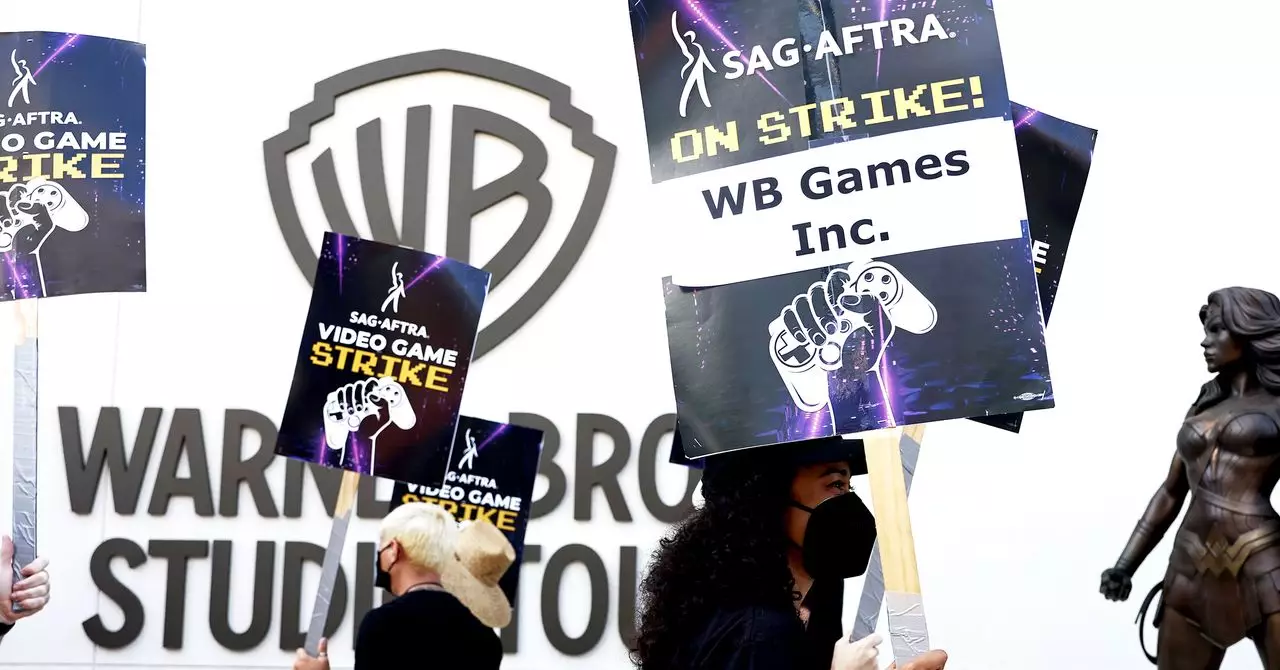The recent ratification of a groundbreaking contract by SAG-AFTRA marks a pivotal moment in the entertainment industry’s ongoing struggle to maintain human oversight amidst rapid technological advancements. With a staggering 95 percent approval among members, this deal isn’t just a routine agreement—it signals a bold stance against the unchecked rise of AI in creative domains. Video game performers, whose artistry breathes life into virtual worlds, have effectively secured protections that acknowledge their profound contribution while setting clear boundaries on AI use. This victory demonstrates that even as technology evolves, the fundamental value of human talent remains irreplaceable and deserving of respect.
What makes this contract truly noteworthy is its emphasis on safeguarding performers’ rights in an era increasingly dominated by AI-driven content. By instituting consent and disclosure requirements, the agreement enforces transparency—an essential safeguard that ensures artists are aware of, and agree to, the digital replication of their likeness or voice. Furthermore, the ability for performers to pause or revoke AI-generated material underscores their continued agency. This is a decisive move that signals the entertainment industry’s recognition that innovation must not come at the expense of human dignity or artistic integrity.
AI’s Disruptive Presence in the Gaming World: A Wake-Up Call
Artificial intelligence’s infiltration into the video game industry has been swift and disruptive, often pulling the rug beneath performers and creators alike. The creation of AI-generated characters, such as Fortnite’s digital Darth Vader, exemplifies how AI is not only augmenting but threatening to replace human roles. Such instances underscore an alarming reality: AI is not just a tool for enhancement but a surrogate for human talent—sometimes without proper acknowledgment or compensation, raising ethical concerns.
The swift backlash from SAG-AFTRA, including legal action against companies like Epic Games, highlights the seriousness of the threat. Replacing human voices and likenesses with AI without prior notice or negotiation subverts the rights of performers, turning them into commodities rather than collaborators. This legal challenge serves as a wake-up call to studios and developers—technology must serve artists, not diminish their significance. The industry’s response, through binding contractual protections, signifies a conscious effort to establish ethical standards that keep human performers at the center of the creative process.
The Ethical Landscape: Balancing Innovation with Respect
Fundamentally, this agreement reframes the conversation about AI in entertainment—not as an inevitable wave to be ridden over performers, but as a challenge to be met with responsibility. Respect for performers involves more than contractual clauses; it demands a cultural shift that values human creativity and emotional expression. The protections for deceased artists like James Earl Jones exemplify this ethos, emphasizing that their digital likenesses—created with permission—should be treated with dignity and fair practices.
By establishing clear guidelines for how AI can be used, the contract paves the way for a future where technological innovation does not erode ethical standards. This legal framework is a proactive stance that ensures performers, whether alive or departed, retain control over their work, safeguarding their legacy from becoming mere data in a digital marketplace. Industry players who embrace this approach will likely find that respecting artists’ rights fosters trust, creativity, and sustainable innovation.
Reimagining the Future of Digital Performance
This contract signals more than just a victory for workers—it embodies a vision for an industry that recognizes the transformative potential of AI when channeled ethically. The successful negotiation and ratification demonstrate that business interests and moral imperatives can coexist; they are not mutually exclusive. By establishing protocols that protect performers and give them agency over their likenesses, the industry is stepping into a future where human talent is both valued and protected.
Innovation should serve to enhance storytelling, not to diminish the role of artists behind the scenes. The way forward involves a collaborative approach—developers, performers, and regulators working together to craft standards that respect human artistry while embracing technological advancement. This contract isn’t just about safeguarding rights; it’s a declaration that human creativity remains at the core of immersive experiences, and that technology must augment rather than erase it.
What we are witnessing is the dawn of a more conscious, morally grounded era in digital entertainment. The new contract exemplifies that innovation does not necessitate exploitation; instead, it can be harnessed responsibly to elevate performers’ contributions. By championing transparency, consent, and respect, the industry can foster a thriving ecosystem where human artists continue to inspire and shape the future of gaming and beyond.


Leave a Reply